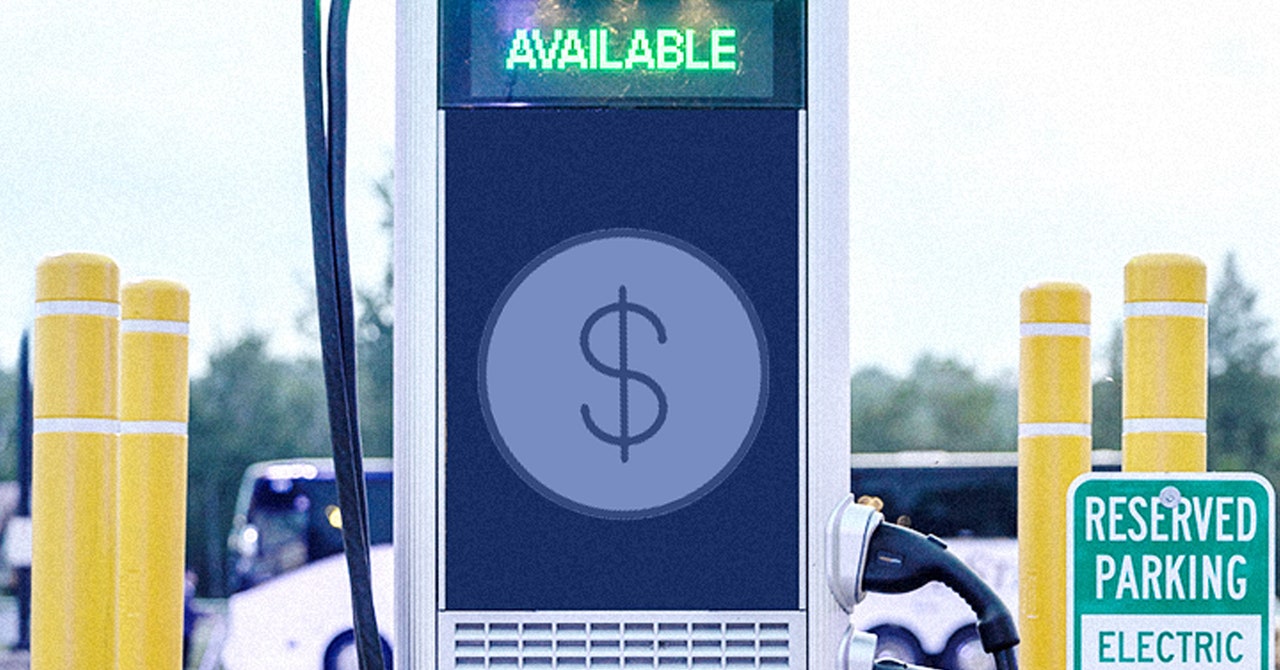
One other bizarre function of electrical energy pricing are demand prices. These are charges that EV charging web site hosts pay, and are based mostly on their highest utilization, in 15-minute to one-hour intervals, throughout a pay interval. These demand prices assist utilities take care of the assorted prices of constructing and sustaining an electrical grid. However they’re irritating within the EV charging context, as a result of some chargers get used very hardly ever—however when they’re used demand a variety of electrical energy in a brief period of time. That results in demand prices.
These demand prices can hit the “a whole lot of hundreds yearly for a particular web site,” says Rachel Moses, who directs gross sales, advertising, and enterprise growth at Electrify America.
In the meantime, some utilities cost “peak” pricing—that’s, more cash when numerous different persons are utilizing electrical energy. This implies it tends to value extra for charging websites to supply electrical energy between 4 pm and 9 pm, when everybody heads dwelling, activates their televisions, air conditioners, or warmth models, and maybe plugs of their vehicles. All of it quantities to barely unpredictable charging costs.
Electrify America says its pricing is “station particular,” that means it is going to cost clients more cash to cost at stations which might be dearer for it to run. However different EV charging firms take a broader method and common out the prices of operating their entire community to determine pricing throughout a wider space.
What’s extra, firms are permitted to cost dynamic costs for EV charging, that means they will change. There may be, fortuitously, a restrict to this technique. Guidelines round nationwide public-charging infrastructure funding signifies that any chargers constructed with public funds can’t change their costs if you’re in the midst of charging your automobile, even when the worth the corporate is paying for its electrical energy modifications.
This all means it is laborious, proper now, to foretell what you’ll pay to high up at a public quick charger. No surprise drivers are pissed off.
Nu Gasoline Station?
However ought to drivers be pissed off? Not fairly realizing what you’ll pay to cost up your automobile at a public quick charging could be annoying. However it’s additionally not a full reflection of most peoples’ EV experiences.
The actual benefit of proudly owning an electrical automobile is that, when you can solely discover gasoline at a gasoline station, vehicles could be charged in numerous totally different areas. At dwelling, on the grocery retailer, at work: These locations won’t all have quick chargers, however loads have shops and “degree 2” slower chargers the place drivers can get a little bit of juice.
Headlines—and a few drivers—get actually hung up on public charging stations. However some 90 p.c of in the present day’s electrical automobile drivers have garages, driveways, or different locations the place they will cost their vehicles in a single day. Sometime, that received’t be the case, and public chargers must fill within the gaps for individuals who dwell in flats or park on the road.
However for now: Possibly don’t get too caught up on public chargers, which in the present day principally fill within the gaps when EV drivers are on lengthy automobile journeys.
“We’ve this gas-station mannequin in our heads,” says Kellen Schefter, the senior director of electrical transportation on the Edison Electrical Institute, an affiliation representing US investor-owned electrical firms. “If our purpose is barely to duplicate the gas-station mannequin for EVs, we’ve missed out on one of many actual benefits of EVs.”






